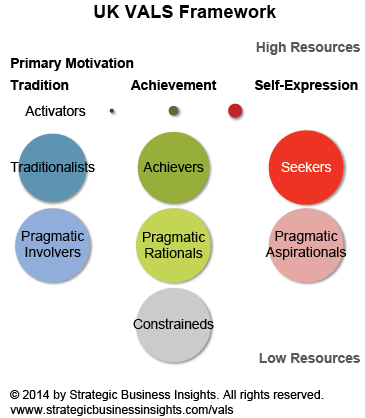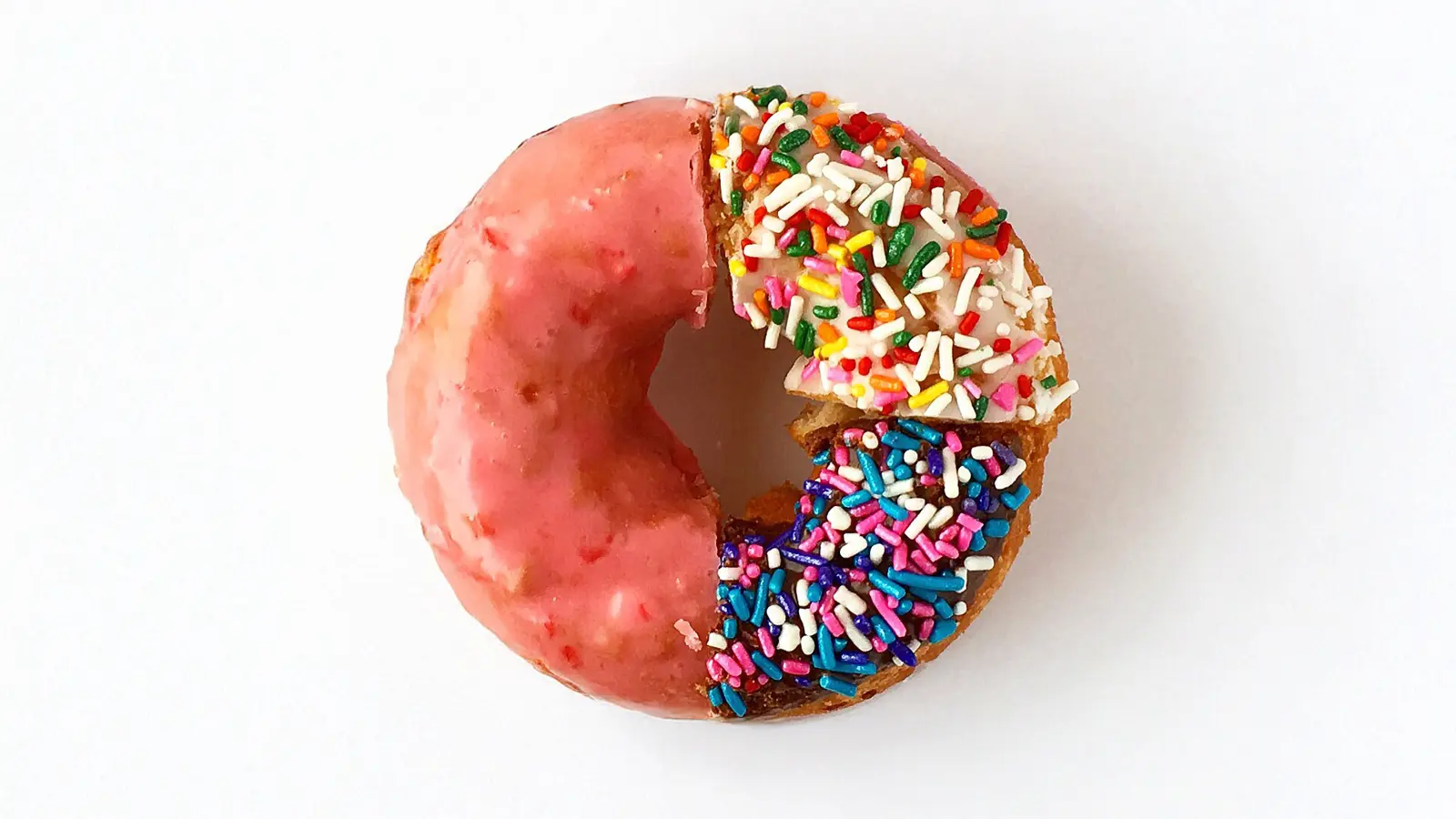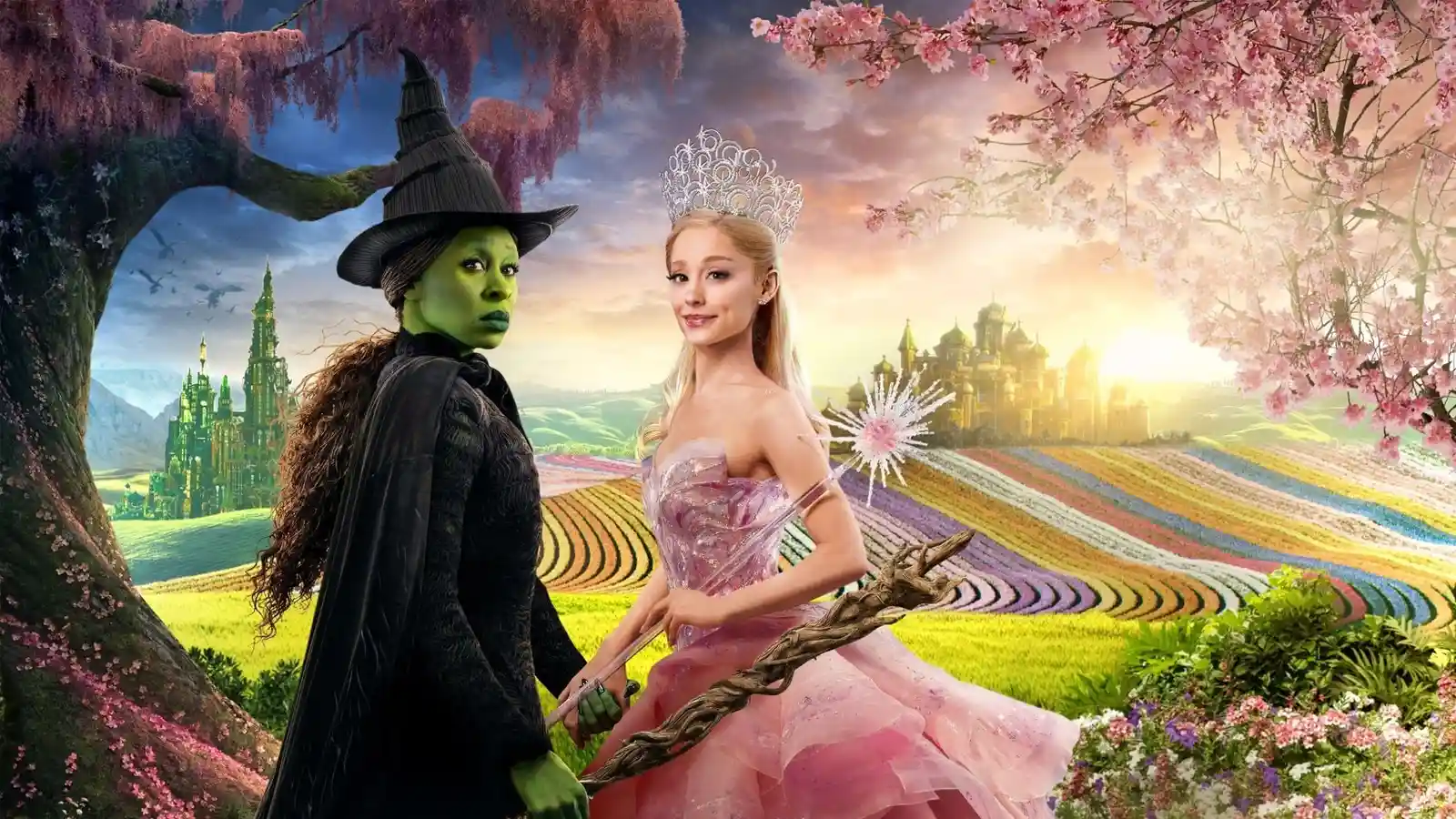Psychographics
Explore how psychographics tries to define audiences and consumers according to their personalities and lifestyles.
Definition
In our guide to demographics and the classification of the audience, we explored the different ways governments and other institutions try to understand population trends by collecting data on, for example, their age, social class and ethnicity. Those statistics offer a broad appreciation of audience numbers, but they fail to clarify why the groups consume different media texts.
By contrast, psychographics tries to explore the behaviour of consumers according to their personalities and lifestyles. Instead of appealing to everyone in a certain age group, the use of psychographics enables companies to target the people who are most likely to engage with their message because the profiles focus on their values and aspirations.
Contents
Values, Attitudes and Lifestyles
Created in the 1970s and run by Strategic Business Insights (SBI) until 2024, the VALS survey attempted to define consumers according to their psychological traits and motivations. By mapping behaviour and attitudes, they helped businesses gain a greater insight into their customers, so they were able to develop strategies to increase demand for their products and improve their market share.
The survey was designed to identify different types of people. Questions focused on, for example, product ownership, media preferences, and hobbies.
The UK’s Consumer Groups
The UK version, which had six core consumer groups, described the motivations of the respondents in terms of tradition, achievement, and self-expression. It also considered their access to resources.

Activators
Activators are at the forefront of innovation, consumer activity, and change and are the most open to new ideas, products, and services. They have wide-ranging interests and a strong sense of personal identity. Activators divide by motivation: Tradition Activators, Achievement Activators, and Self-Expression Activators.
Traditionalists
Traditionalists focus on preservation. They regulate social change, forcing reassessment of new ideas in the light of proven and established standards and ethical codes.
Achievers
Achievers relate achievements to the fruits of hard work and professional endeavor. They focus on success, status, and family. They value knowledge, influence, and qualifications.
Seekers
Seekers want individuality, self-discovery, display, and action. They actively seek self-gratification, excitement, experimentation, and sociability.
Pragmatics
Pragmatics like to play safe. They dislike standing out from their peer group and have a relatively low attachment to any particular lifestyle. Similar to Activators, Pragmatic consumers differentiate by motivation: Pragmatic Involvers have a tradition motivation, Pragmatic Rationals have an achievement motivation, and Pragmatic Aspirationals have a self-expression motivation.
Constraineds
The constrained groups prefer to try to hold on to the familiar and the past. Their world consists of immediate family and a few friends, who reinforce rather than challenge or renew their opinions and ideas.
The 4Cs
Perhaps the most influential approach to psychographics was Young and Rubicam’s cross-cultural consumer categorisation, better known as the 4Cs. Inspired by Maslow’s hierarchy of needs, the marketing agency wanted to learn what motivated people to buy certain brands so they could develop a deeper appreciation of how brands actually appealed to their target audience. Their conclusions identified seven different personality types based on “core motivation”.
The following definitions come from the 2010 version of their 4Cs:
The Explorer
These people are driven by a need for discovery, challenge and new frontiers. Young in nature, if not in reality, Explorers are often the first to try out new ideas and experiences They respond to brands that offer new sensations, indulgence and instant effects. In short, difference is what they seek out. Their core need in life is for discovery.

The Aspirer
Materialistic, acquisitive people, who are driven by others’ perceptions of them rather than by their own values. As a result, they respond to what others perceive as being superficial: image, appearance, persona, charisma and fashion. An attractive pack is as important to them as its contents. Their core need in life is for status.
The Succeeder
Succeeders possess self-confidence, have a strong goal orientation and tend to be very organised. As a result, they tend to occupy positions of responsibility in society. Their investment in the status quo means they tend to support it. When it comes to brands, they seek reward and prestige, and will often seek out the best, because that is what they feel they deserve. On the other hand, they also seek out caring and protective brands – their aggressive attitude to life means they need to relax occasionally. Their core need in life is for control.
The Reformer
“Don’t tell me what to do or what to think” says the Reformer, valuing their own independent judgement. Reformers are the most anti-materialistic of the seven groups, and are often perceived as intellectual. They are socially aware, and pride themselves on tolerance. Reformers seek out the authentic and the harmonious, and are often at the leading edge of society. However, unlike Explorers, they will not buy things just because they are new. Their core need in life is for enlightenment.

The Mainstream
These are people who live in the world of the domestic and the everyday. A daily routine is fundamental to the way they live their lives. Their life choices are “we” rather than “me”. As their name implies, they are the mainstream of society. They are the largest group of people within 4Cs across the world. They respond to big established brands, to “family” brands and to offers of value for money. Their core need in life is for security.

The Struggler
Strugglers live for today, and make few plans for tomorrow. Others often see them as victims, losers and wasters – aimless, disorganised people with few resources apart from their own physical skills. If they get on in life, it will depend more on a winning lottery ticket than anything they do themselves They are heavy consumers of alcohol and junk food. Visual impact and physical senses on are an important element of their brand choices. In essence, they seek escape.
The Resigned
These are predominantly older people with constant, unchanging values built up over time. For them, the past is bathed in a warm nostalgic glow. They respect institutions and enjoy acting in traditional roles. Their brand choices are driven by a need for safety and for economy. They choose above all what is familiar to them. In life, their aim is basic: it is to survive.
Youth Facts Study
There are lots of investigations and research into consumers and their motivations to engage with certain brands because advertisers need to understand their target audience if they want their message to reach the right people. In the Youth Facts study, a group of young people were asked whether or not they agreed with 48 different attitude statements. The analysis of their responses identified six distinct personal types of young people.

Free Spirits
These guys are laid back. They are almost new-age hippies, into the rock and role lifestyle. Just over the most half are male, and they are the oldest of the clusters; with an average age of 16 and 3 months, they spend the most money.
Free spirits reject marriage, children, shopping, cosmetics and capitalism. They are interested in social matters and care about the environment. They buy environmentally friendly products and would never use anything tested on animals. One in eight is vegetarian.
Nesters
Far removed from Free spirits. They want to get married as soon as possible and to have children, in that order. Very little sex before marriage, these nesters believe in family values. They disagree with abortion and don’t think marriage is outdated. They are against legalising soft drugs and would never try any drugs themselves. They are tidy, virtuous, hard-working, concerned and worry a lot. Six out of 10 are girls.
Funseekers
These kids work hard, play hard and spend hard. They were born to shop. Fewer are in higher education than the other groups. Physical appearance is very important and being trendy equally so. They display labels and believe most strongly that brands say a lot about you.
Funseekers consume more media than the other groups. Over three-quarters read a daily newspaper, they refer magazines to books and love sports and soap on the telly.
Leaders
These kids look the stuff of today’s gang leader or school captain. They are independent, concerned, responsible, hard-working, competitive and gregarious. Career success is very important as is earning money id enjoying work. Although they save well, they enjoy spending money. They like shopping for clothes and are sufficiently aware of their appearance to be heavy users of cosmetics. The boys use after-shave, and other men’s products.
They are not overly influenced by their friends, yet they spend a lot of time in their company and frequently go out to a pub, cinema or live music.
Followers
In just about everything they think and do they want to be “normal”. They want to be like their friends. Wanting more responsibility and standing out from the crowd is not for them.
Friends are their great comfort. Having friends round, visiting their homes or just hanging out is central. When friends visit the TV is always on in one room and chart music in the others. After Funseekers they consume the most media, reading lots of magazines, the boys computer magazines and the girls TV and gossip magazines. Soaps are unmissable.
Armchair Rebels
These kids have attitude. They are the youngest of the clusters with an average age of 15, which may well excuse their negative, apathetic natures.
Armchair rebels are more likely to try drugs than other kids, and they think soft drugs ought to be legalised. Crime, they believe, would not increase if sentences were lighter.
They don’t think keeping fit or eating sensibly is important They believe less than anyone else that smoking harms others or that drinking can be bad for people. They don’t worry about anything.
Other Psychometrics
There are lots of companies providing detailed audience analysis to private and public institutions who want to advertise their goods and services to the right type of customers. For example, Acorn explores population behaviour in the UK and uses those insights to enable businesses to target their customers through print and online advertising. If you want to deliver an effective advertising campaign on television, Thinkbox offers advice to institutions to reach their primary audience. It is really worth looking at both of their websites.
Stay Tuned
Curious about how audiences respond to media texts? The following articles explore how we interact and interpret the media.







